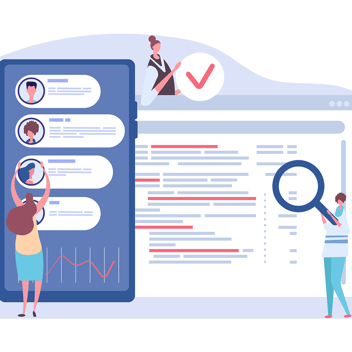Insights
Design Thinking for Strategic Innovation
What is design thinking?
To solve a problem using design thinking is to put the customer's needs first. It sounds straightforward. However, the idea was revolutionary when it was first introduced. At the time, too many large corporations could not think creatively and create new products and services to satisfy their customer’s unmet needs.
Compared to traditional problem-based thinking, a linear process of identifying a problem and finding a single solution, the design thinking process is not linear. It takes a flexible and fluid approach to problem-solving.
Design thinking is a "human-centered" process depending on observing with compassion how we as people interact with our environment and uses a hands-on approach to creating the most innovative solutions. It's research-based evidence of how consumers utilize a service or product instead of how someone else or an organization thinks they should engage with it.
The idea of being "human-centered" means to watch how humans use a product or service and, based on these observations, continue to perfect their consumer's experience. This means:
- Developing a deep understanding of customers' or users' unmet needs within the context of a particular situation
- Interpreting data and discovering insights
- Questioning assumptions
- Exploring different perspectives
- Generating creative ideas
- Reframing problems into opportunities
- Critiquing and choosing ideas
- Implementing your strategic innovation
Design thinking favors rushing prototypes out to test rather than remaining in the endless research phases of product development. By comparison, the design thinking approach’s success lies in observing the users before choosing a solution.
Why is design thinking important?
Design thinking allows organizations large and small to create lasting value for their consumer base. The process can be beneficial in any complex system, not only in a design system. By zeroing in on essential and user-centered requirements, design thinking delivers value rapidly while minimizing risks associated with change.
Gives rise to other strategic innovation
Unfortunately, humans are usually incapable of imagining things they believe aren’t possible—making it difficult to create anything that does not yet exist. However, design thinking opens the door to strategic innovation and often leads to incredibly creative inventions and solutions. In essence, it opens the door to man's creativity and ability to think "out of the box" in terms of what is possible.
Solves vague or hard to define problems
Often consumers don't know what the problem is, but they can explain the issue and know they have something to solve. However, upon careful observation, a team experienced in design thinking can identify the problem and create a solution based on the consumer's behavior. Whatever product they were using has been considerably improved thanks to a design thinking intervention.
Solves consumer pain points
With the focus of design thinking being observational and human-centric, often many teams uncover specific problems consumers had never been aware of or even given a second thought. Design thinking provides solutions to these pain points as they come up.
Helps organizations run faster and more efficiently
As opposed to the traditional linear approach of problem-solving, which involves researching a problem for a long time without devising an outcome, design thinking favors creating prototypes and then testing to see how effective they are. This iterative style is more customer-centric, creative, and, in the end, provides a quicker result.
What are the steps in the design-thinking process?
Design thinking adheres to a five-stage framework.
1. Empathize
In this initial stage, the designer’s responsibility is to observe consumers with empathy and gain a deeper understanding of how they interact with or are affected by the product in question. Meaning withholding judgment and not conveying any preconceived notions to the consumer about what they might need. This way, the consumer can freely use the product and uncover issues they didn't even know they had or couldn’t verbalize themselves until now.
2. Define
In the second stage, based on the first stage’s observations, the designer defines the problem they're trying to solve. They're thinking about the challenges they saw their consumers encounter with the product and how it affects them regularly. Once they've summarized their findings, they're able to define the problem they're facing.
3. Ideate
Then it's time to brainstorm various ideas regarding how to solve the problem you've identified. These ideation sessions are usually in a group set-up. The design thinking team will gather in a space encouraging creativity and collaboration. The most crucial part will be to generate a variety of different ideas. Towards the end of the process, the team will select a few ideas to move forward.
4. Prototype
When the idea becomes a tangible solution, this is known as the design thinking process's prototype stage. Prototypes are certainly not the final solution, nor are they perfect. A prototype aims to produce a concrete version of the idea to see how consumers receive it.
5. Test
When the prototyped solution is released, it's time to observe how consumers interact with it. The testing stage is where designers collect critical feedback. Remember, the design-thinking process is iterative as opposed to linear. At this point in the process, the designer will likely have to return to one or several other stages to modify or develop another prototype.
Why does design thinking work?
There was a time when traditional problem solving was the only way to finding a solution. Yet, when design thinking's iterative method arrived on the scene, everything changed. Design thinking for strategic innovation works because it’s a collaborative method and a co-creative process founded on engagement, dialogue, and learning principles.
If you’re unfamiliar with this process, contact our team to learn how to conduct the co-creative process. Then, when you include your consumers in the process of defining the problem and developing solutions, you have a greater chance of creating a great UX and reaching an answer to satisfy their long-term needs.




